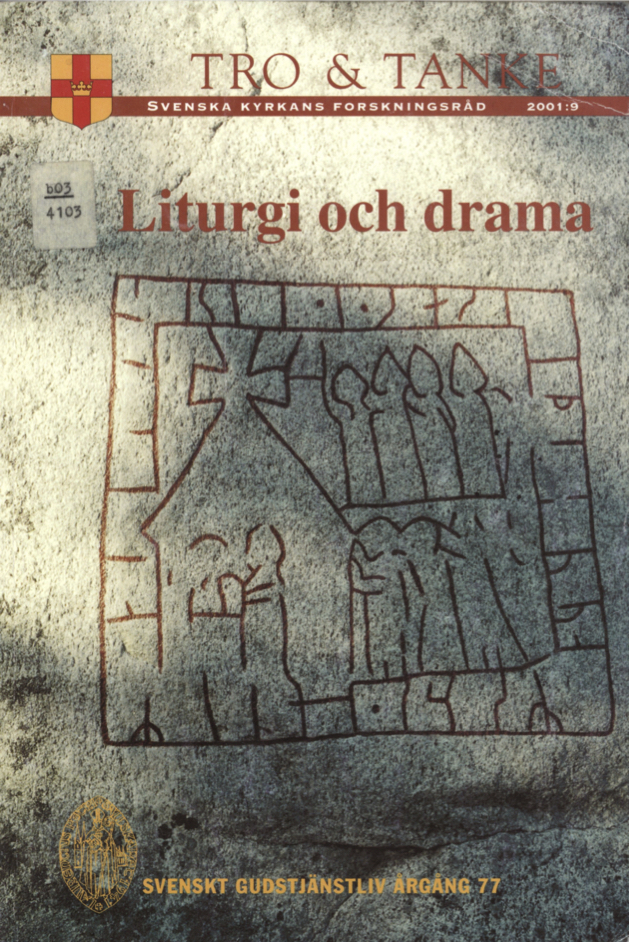Apokalyps och Superstar - musikdramatiska kontraster
Abstract
This essay deals with two contrasting musicodramatic works: The Revelation of St. John (Johannes uppenbarelse), Symphony No 4, hy Hilding Rosenberg, Swedish pioneer for the “new music” of the century (rather an oratorio, 1940, final version 1950) and Jesus Christ Superstar, A Rock Opera, by An drew Lloyd Webber, the foremost composer of musicals during the century, and his librettist Tim Rice (1970). Both works are based on biblical material, renewing the classical genres of oratorio (which was always mainly Bible inspired) and tragic opera (which was originally built solely on material from classic antiquity hut gradually widened its range to include more recent drama, and in some cases biblical material). The respective musical solutions in their works are, however, quite different: Rosenberg takes the middle course between atonality and neoclassicism, whereas Lloyd Webber mainly depends on the pop and rock culture.
Rosenberg’s work is inspired by the assault of Evil during World War II and, in the light of texts from the last hook of the Bible, he interprets the universal fight between Good and Evil throughout the ages. The plan for the work and the selection of biblical texts were his own conception altogether, hut the poet Hjalmar Gullberg was requested to write a series of poems directly applying the texts to the contemporary situation. The work consists of eight blocks, and the course of events culminates in two crucial developments: the assault of Evil, in the shapes of a dragon and two beasts, in blocks 3-4 (= Rev. ch. 12-13), and the victory of Good, in blocks 6-8 (= Rev. ch. 14, 19 and 21). Block 5 has a key position in the work: it contains words of divine invitations and promises (taken from an earlier context: Rev. ch. 2 and 3) offering tormented humanity breathing space, hope, and strength to persevere. This disposition of block 5 shows particularly clearly Rosenberg’s intentions with his work: his desire to kindle hope in a situation of suffering and devastation, and his belief in the moral stature of humanity and the final victory of Good.
Musically, Rosenberg uses violent dissonant chromatism to illustrate the assault of Evil (Ex. I), whereas the victory of Good is expressed in serene diatonic triads. The recitatives, most of them solistic hut some also for choir, are mainly performed syllabically in simple melodic lines with cadences, hut important words are often melismatically brought forth (Ex. 2). The chorals, deliberately retrospective in style, are closely linked with the so-called Church modes, choral 1 with the d- (“Dorian”) mode, and consistently arranged in diatonic triads (Ex. 3,4). In a diatonic context, Rosenberg’s modernism is exhibited in his unconventional methods for chord changes, above all avoiding the traditional dominant-tonic relation.
The dominant-tonic relation is a main characteristic also of the pop and rock culture, as exemplified in Lloyd Webber’s Superstar fanfare (Ex. 5). The composer is, however, not an unsophisticated representative of this culture. In the Hosanna chorus, he changes chords in a boldly unconventional manner (Ex. 6). Parts of the music exhibit some kind of neoclassical style, and Mary Magdalene’s famous love aria is audaciously plagiarised from Mendelssohn’s E minor concerto (Ex. 7). The music often gives a skilful characterisation of the different individuals as conceived by the librettist.
“Who do men say that the Son of Man is? ”The question in Matth. 16,13 may have given Rice the idea for his overarching grip of the evangelical story. As events proceed, different partakers give their answer to this question, but Peter’s confession that Jesus is the Messiah and the Son of God is characteristically ignored by the librettist. The apostles are depicted as unstable and disconcerted. A dominant place is given to Judas Iscariot’s and Mary Magdalene’s common conviction that “he’s just a man”. The female pupils of the gospels are here not his personal pupils at all, but in a sexist manner labelled “the women of the apostles”, i.e. their mistresses, and Mary Magdalene (falsely reported to be a prostitute) is given as Jesus’ own mist ress. Jesus himself shows great uncertainty and disorientation. His talk of a kingdom which “does not belong to this world” (John 18,36) is being alluded to several times, but it is distorted in the dialogue with Pontius Pilate: “There may be a kingdom for me somewhere— if I only knew”. However, the Gethsemane scene is most touchingly represented and it also shows Jesus’ conviction of having a special relation to and a special mission from God. Is his death the final link in the Jesus drama? It is indeed of good tragic opera tradition to end with the death of the hero. The rock opera ends, however, with the basic question of who Jesus is still left unanswered. This has given the possibility for the performers to indicate an answer, for example through special lighting effects suggesting the dawning morning of the resurrection.
Without being confessional Christians, Rosenberg and Gullberg valued the Bible and formed their oratorio into a message with religious overtones—of hope and peace for humanity. It exists both with its original Swedish text and in an English translation. It has great actual relevance and highly deserves to be performed by contemporary ensembles. Rice’s/Lloyd Webber’s rock opera needs no special recommendation— anew it is a success in many countries. It does not have a distinct message in the way of the oratorio, but despite its distortions of the evangelical narrative it can certainly contribute to keeping alive the question of who Jesus is.
Downloads
Publicerad
Nummer
Sektion
Licens
© författarna, Laurentius Petri Sällskapet för svenskt gudstjänstliv samt Artos & Norma bokförlag. Det är tillåtet att kopiera och använda material ur Svenskt Gudstjänstliv för forskningsändamål om källan anges. För övriga ändamål kontakta respektive artikelförfattare samt förlaget. Särskilda restriktioner kan gälla för bildmaterial.


